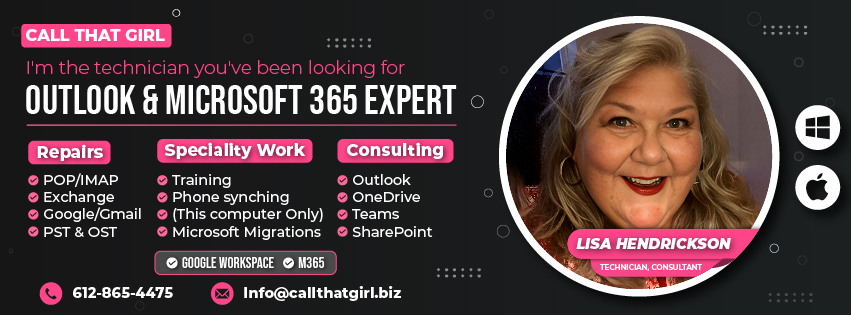New Outlook Preparation Check List
New Outlook Preparation Check List
Hey folks! Due to the upcoming changes with Microsoft, I’m setting up a service specifically for those who want to know everything they need to know to get ready. Yes, it might be years away but Microsoft can tend to change things up quickly and it’s important you know what will be changing for you with your current Outlook configuration. I’m already helping people now because they have tested the New Outlook and like it better than classic, so we are migrating all their data to platforms so they can use the New Outlook.
If you are only using a business domain account with Microsoft 365, more than likely your data will all convert with some minor changes. I’m happy to do a spot check with you either way.
If you are using IMAP, POP/PST and Yahoo, Gmail, etc. This appt will be important for you in the future.
Here is the checklist of topics I can cover in a 30 min – 60 min session:
- Review your email accounts and discuss each one and how it will work in the New Outlook
- Example: You can’t use iCloud in the New Outlook if you have another email account using your iCloud user name (Apple ID). This is very common for my clients to use one email address for everything.
- Review your mailbox sizes limit on the server and what it can handle
- Create solutions for all your data to get into a cloud server of your choice
- Review your PST files. We will decide if you want to move them to a Business 365 Microsoft account or a Personal 365 Microsoft Outlook or another platform such as Google, Gmail, etc.
- Review your Outlook contacts, calendars, tasks and notes. Everything in the New Outlook is different, that data will need to get migrated as well.
- If you are a heavy tasks user, then we will discuss how that will change using the New Outlook
- This is very important to know if you are an Android user
- Review your phones, iPhone and Android users have different mobile apps and each has different synchronizing capabilties
- How to migrate your memory of contacts, these are the names and emails that show up when you start typing an email
- Review your rules, quick parts and templates
- Review Zoom, Teams, CRM, ACT, Any other add-ins, 365 Connectors
- Security for all email accounts
- Personal and Business 365 accounts and licenses
- After our discussion, you might want to change or upgrade depending on your needs
- I’m always going to recommend domain IMAP users move to Microsoft Exchange. If that is not feasable, there are other options to just move your data to an Outlook.com account (free Microsoft 365 Exchange server)
- Create a mapping of all of your DNS, 365, all email accounts
I might think of some more to cover, but this is what I find is typical of from my past client requests.
To schedule your session, use this link — Click here to schedule
Category: Outlook Support

 Starbucks Thank You Card
Starbucks Thank You Card 
